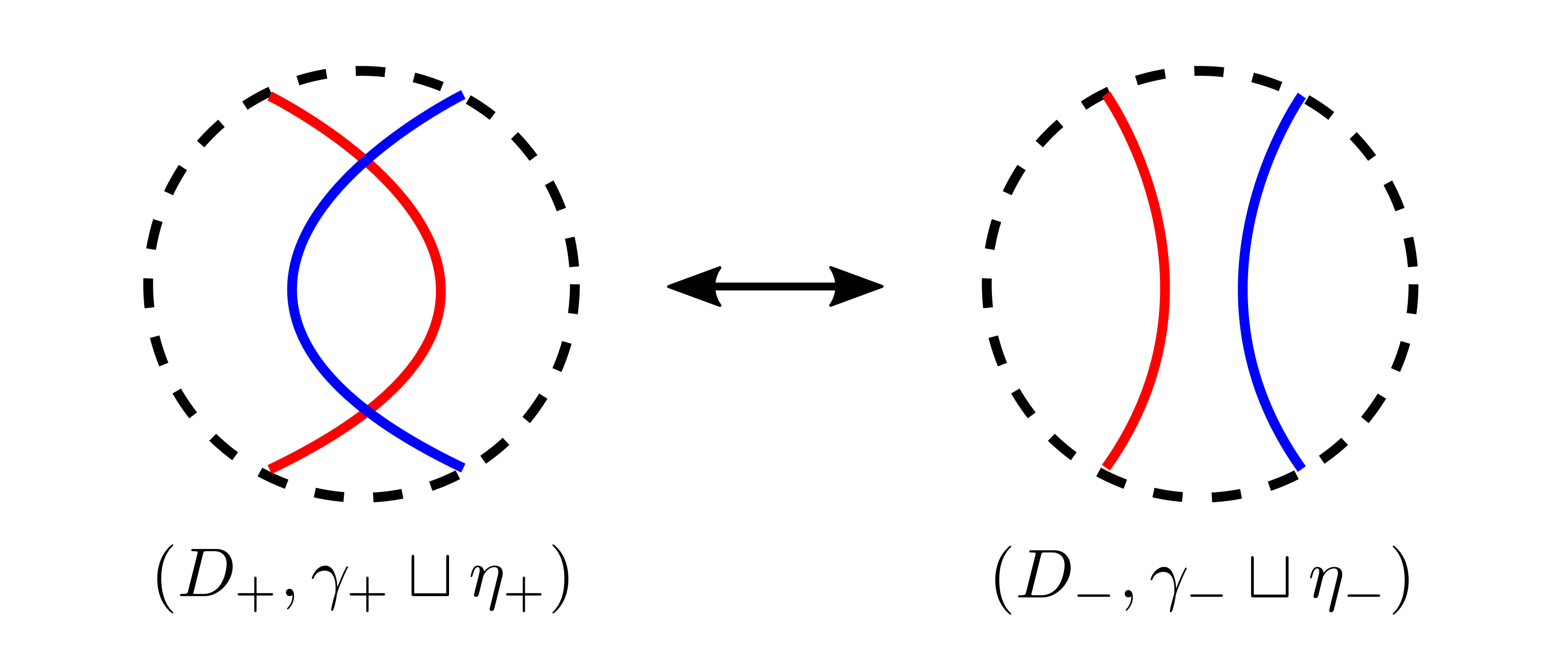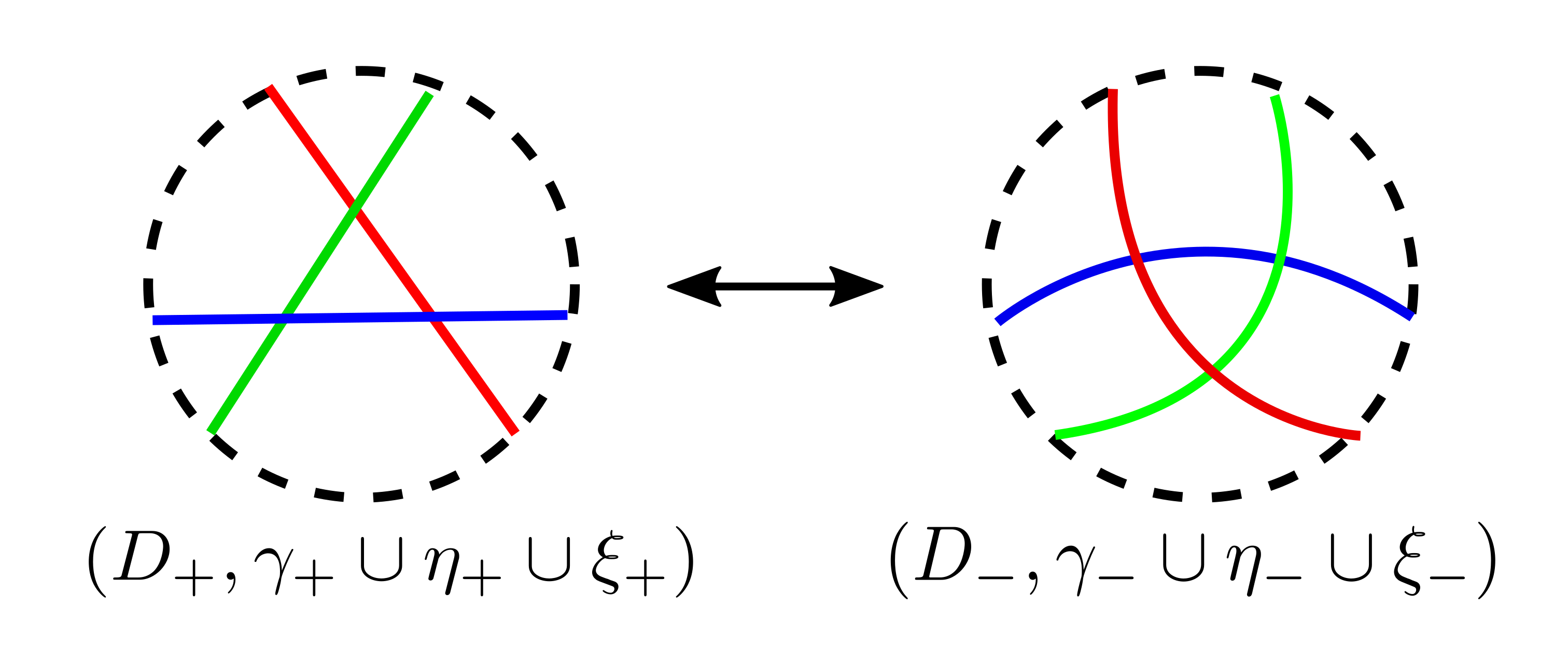Preliminaries
Let $\Gamma$ be a closed $1$-manifold (i.e. a union of finitely many circles) and let $\Sigma$ be a closed $2$-manifold (i.e. a surface). I'll adopt the following terminology.
Definition 1. A clean immersion $\iota:\Gamma \to \Sigma$ is an immersion such that
- $\iota$ restricts to an embedding on each component of $\Gamma$ and
- the self-intersections of the image consist of transverse double points.
Reidemeister-Type Moves For Clean Immersions
Consider the following two analogues of the Reidemeister moves. The first is an analogue of Reidemeister 2.
Definition 2. A two-point move on $\iota$ is any modification of $\iota$ to a new clean immersion $\iota'$ as follows. Let $D \subset \Sigma$ be a disk such that $(D,D \cap \iota(\Gamma))$ is diffeomorphic to either $(D_+,\gamma_+ \cup \eta_+)$ or $(D_-,\gamma_-\cup\eta_-)$, which are given by the pictures
Then, swap $(D_+,\gamma_+\cup\eta_+)$ for $(D_-,\gamma_-\cup\eta_-)$ (or visa-versa).
The second is an analogue of Reidemeister 3.
Definition 3. A three-point move on $\iota$ is any modification of $\iota$ to a new clean immersion $\iota'$ as follows. Let $D \subset \Sigma$ be a disk such that $(D,D \cap \iota(\Gamma))$ is diffeomorphic to either $(D_+,\gamma_+ \cup \eta_+ \cup \xi_+)$ or $(D_-,\gamma_-\cup\eta_-\cup\xi_-)$, whcih are given by the pictures
Then, swap $(D_+,\gamma_+ \cup\eta_+\cup\xi_+)$ for $(D_-,\gamma_-\cup\iota_-\cup\xi_-)$ (or visa-versa).
A Reidemeister-Type Theorem
I believe the following result is true of homotopies of clean embeddings.
Proposition. If $\iota_0:\Gamma \to \Sigma$ and $\iota_1:\Gamma \to \Sigma$ are homotopic, then they are related by a sequence of two and three point moves.
Here is a sketch of the argument that I have in mind.
Proof: Pick an smooth homotopy $\iota:\Gamma \times I \to \Sigma$. We can choose this isotopy so that it is an isotopy embeddings on each component. Now consider the trace $I:\Gamma \times I \to \Gamma \times I$ given by $I(s,t) = (\iota_t(s),t)$.
By Papakyriakopoulos (?) we can perturb $I$ away from a neighborhood of the boundary of $\Gamma \times I$ to a map $I'$ with only arcs of double points, isolated triple points and isolated branch points, and where the double point arcs must have boundary on the branch points. Also, we can pick $I'$ so that the components of $\Gamma$ are still embedded. In particular, there can be no branch points and so the double point arcs must be closed curves.
We can perturb again to an embedding $I''$ where the double point circles so that they are transverse to the projection map to $[0,1]$. Then these represent (forward and backward) two-point moves. In a similar manner, the triple points correspond to the triple-point moves.
Main Questions
My issue is that I can't for the life of me find a reference for Proposotion 1! Also I think it would be ideal for the particular project I'm working on to not include a fleshed out version of the proof I discussed above.
Question 1. Where can I find a reference for Proposition 1? Or a statement from which I can conclude Proposition 1 as a quick Corollary?
Also, just to be sure...
Question 2. Proposition 1 is correct, right? Or am I just totally off base?


